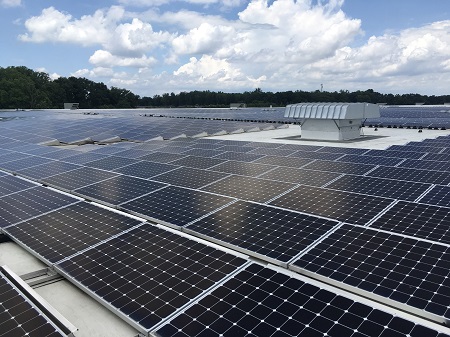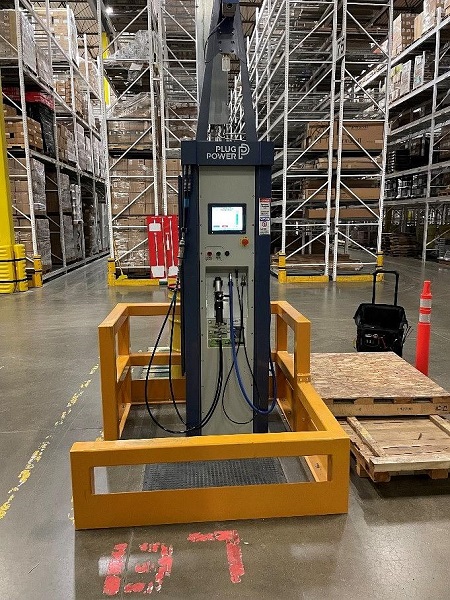Minimize shipments, minimize miles and maximize what goes into the trailer.
That's how Grainger is putting the E in ESG
Editor’s note: This is the second of two columns on sustainability in the supply chain. You can read about Apto Solution’s circularity report by clicking here.
We work in an era of heightened awareness around sustainability and ESG. One of the challenges to progress is that like transformation and innovation, two other buzzwords, there are no concrete steps or agreed upon standards to achieving sustainability. It’s up to every company to define what sustainability means for its organizations, and then to identify a starting point that can deliver a meaningful impact rather than just sloganeering We’ve moved beyond “because it’s the right thing to do.”
For Grainger, one of the country’s largest distributors of industrial supplies and equipment, the focal point for at least the past 7 years has been its 24 distribution centers and 348 branches in North America. While some organizations are announcing initiatives around Scope 3 emissions, Grainger is concentrating first on ensuring that its own house is in order – a big enough challenge for most. “We have set absolute goals in terms of greenhouse gas emissions by 2030,” notes Barry Greenhouse, senior vice president and president of Grainger’s global supply chain and customer experience organization. Greenhouse has been with the company for 19 years. He adds: “Given the volume of products that we sell and orders that we deliver, we focus on minimizing shipments, minimizing the miles traveled and maximizing what we put on the trailer.”
Think of it as “the E in ESG.”
There are practical reasons for tackling the outbound supply chain: First, order fulfillment processes directly impact the customer and revenue - that’s where the money is; second, it’s the part of the supply chain that Grainger actually controls. The organization can execute on initiatives that make a difference in Scope 1 and 2 emissions.
The network that Greenhouse manages is geographically dispersed, with the capability to provide next day service of mission-critical parts to customers in 99% of U.S. postal codes. The company sells 2 million SKUs, stocks about 1.5 million SKUs in its distribution centers and ships about 145,000 orders a day. Its distribution centershave been highly-automated for years.
Greenhouse traces Grainger’s sustainability back a little over a decade, when the distributor built out a facility in Minooka, Illinois into one of its then most-automated facilities. “It was a spec building that we updated to LEED standards,” he says. “Since then, everything that we’ve constructed has been LEED-certified. The fact that they are recognized as LEED is great, but we want to build buildings that are as efficient and productive as possible and offer great customer service. Those goals are intertwined with sustainability.”

Grainger is investing in solar, which can provide about 70% of electricity requirements to a DC on a sunny day. Photo courtesy Grainger.
Inside the box, sustainability is translated into action in two ways. When it comes to sustainable operations, Grainger is investing in rooftop solar to generate electricity to power the buildings. On a sunny day, about 70% of the electricity running one of the New Jersey facilities comes from solar. In 2021, Grainger piloted and then began converting its lift truck fleet to hydrogen fuel cell technology. Now, it is converting swing reach trucks and order pickers to the technology. “As we convert to hydrogen and are able to procure cleaner sources of hydrogen, we’ll not only operate sustainably, but will be more productive as we eliminate battery changeover time,” Greenhouse says. “A number of our investments are paying back.”
Grainger has also invested in building management systems to control the infrastructure that consumes electricity; buildings have also been retrofitted with LED lighting and occupancy sensors so that conveyors only run when there’s product to be moved and equipment like its shuttle systems are dark if there’s no one in the area. Greenhouse says that 92% of recyclable materials are in fact being recycled, including corrugated, shrink wrap, pallets and metals.

Grainger is converting its fleet of lift trucks, swing reach trucks and order pickers to hydrogen for a cleaner source of energy. Photo courtesy of Grainger.
Initiatives have not stopped with operations. A significant amount of effort has gone into those three areas we identified early on: Minimize shipments, minimize miles and maximize what goes into the trailer.
Let’s start with the last: Minimize what goes into the trailer. Grainger was an early adopter of solutions that right size shipping materials and eliminate void fill based on the items in an order. Smaller packages mean more packages on the trailer. That reduces the cost per package, but also reduces the carbon footprint associated with a trailerload of Grainger orders.
Grainger has also launched projects to minimize the number of shipments going to a customer and to minimize the miles traveled. “We want to deliver complete orders the next day whenever possible to the customer, in the fewest and smallest packages that we can and across the shortest distance possible,” Greenhouse says.
Deep inventory planning and allocation is one part of solving that equation. “We stock 1.5 million SKUs across the DC network and not every building stocks the same items,” Greenhouse says. Grainger allocates SKUs to buildings based on what sells in the region served by a facility as well as items that typically sell together.
Since it’s not always possible to deliver complete orders the next day, Grainger service teams work with customers to determine those items that absolutely have to be there next day, and then to figure out the most efficient and cost-effective way to deliver the rest of the order and still meet service level requirements. “There are customers who, when given the option, will take a complete order in two days rather than part of it one day and part of it later,” Greenhouse says. “So, we go through that routine to identify the most efficient way to deliver, optimizing the tradeoffs between fastest delivery and fewest shipments.” That also reduces the miles traveled.
After a seven-year focus on outbound logistics, Grainger is now planning to address its inbound operations and its supply base. “The pandemic drove us to focus just on securing product,” he says. “If that meant getting 5 deliveries of 200 units to fill a 1,000-unit order, that’s what we did. Now, the pendulum is swinging back. Over the next three years, we’re going to work with our suppliers to keep our supply chains healthy.”
The goals will be the same as those for outbound logistics: Minimize shipments, minimize miles and maximize what goes into the trailer.
You can read more about sustainability at Grainger here.













